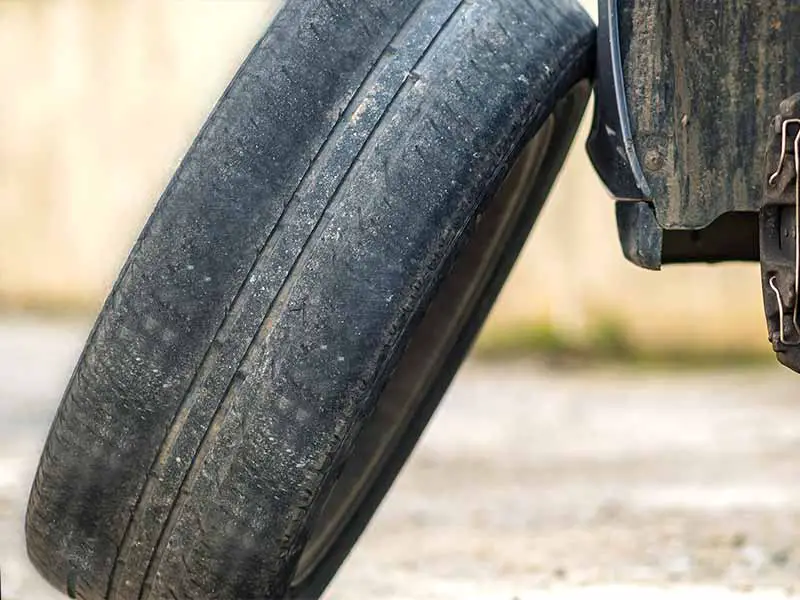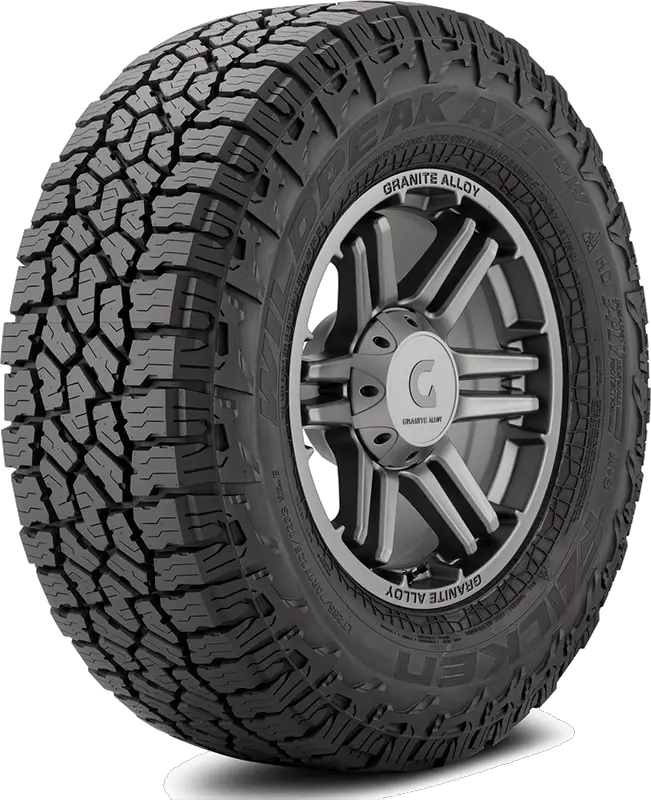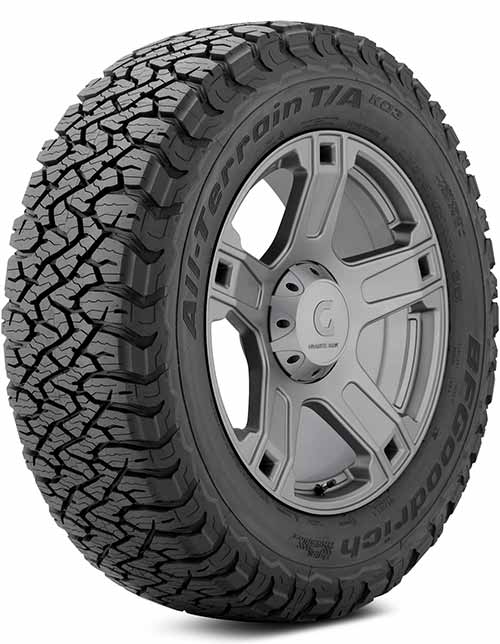Tire wear on both edges or shoulders of the tire is a uneven tire wear pattern that can mean a few different things. Fortunately, most of them are fairly easy to fix. Although, once uneven tire wear patterns occur, the damage has been done and the tire’s lifespan has been shortened.
Inner And Outer Tire Wear
Tire wear on inside and outside edge of a tire is usually caused by lack of air pressure in the tire. Proper tire pressure keeps the center of the tread in contact with the road.
Without the correct pressure, the tire will ride on the tire shoulders and wear them more quickly.
While the most common reason for tires wearing on both sides of the tread is usually low air pressure, that’s not the only possible cause.
Fortunately alignment issues and suspension system problems aren’t usually the reason since they often lead to more expensive solutions.
Let’s take a closer look.
Tires Wearing On Inside And Outside Edges
Most people become aware of their tires wearing on the inner and outer edges when the shoulders have become completely worn and smooth. If this is your situation you should replace your tires as soon as possible to prevent dangerous situations, especially hydroplaning.
Before you spend a lot of money on a new set of tires though, you should understand what the source of the problem is and solve it. Tire wear patterns are symptoms of an underlying problem and just replacing tires without fixing the issue will just cause you to ruin another set of tires.
What Causes Inner And Outer Tire Wear?
Even though the usual reason for tire wear on both the inner and outer edges of your tires is air pressure being too low, it’s not the only one.
Let’s go over tire pressure as well as the other problems to check to make sure we solve the root cause of the uneven tire wear problem.
Under Inflation
The correct air pressure for your tires is important to maintaining the proper shape of the tire and supporting the weight of your car or truck.
The maximum pressure you can inflate your tires up to is listed on the side of the tire, but the correct pressure to use is listed on the tire information sticker in the driver’s door jam or owner’s manual.
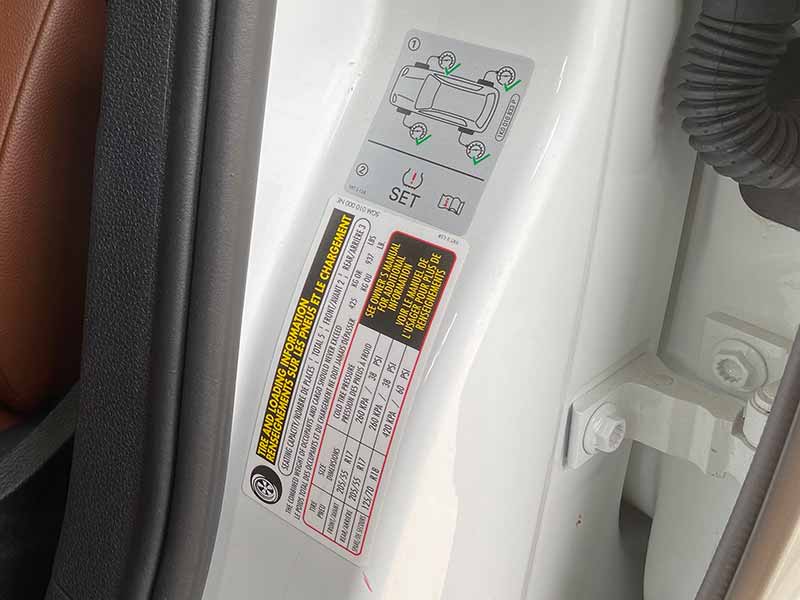
Overloading
You if frequently haul heavier loads than your tires were designed to support you need to account for this. We can’t give you specific instructions on how to deal with your unique load issue, but there are a few options that your local tire shop may recommend depending on your situation.
Aggressive Driving
Hard corning at high speeds repeatedly will cause more wear and tear on the shoulders of your tires and can cause excessive wear much more quickly than normal.
The obvious solution here is to drive more conservatively. I understand that’s more easily said than done for some of us, myself included.
Spirited driving, within the legal limits of course, is something many of us enjoy. Others even spend time at track events for a safer and more extreme experience.
Incorrect Tire Or Wheel Size
Tires that are slightly too wide for the wheel their mounted onto can cause the sidewalls to be pushed inward and the tread center to flex in slightly which leads to the tires wearing more on the shoulders.
You can put slightly wider or narrower tires on a wheel of a certain width, but the amount of adjustment room you have to work with is usually 15mm to 20mm from minimum to maximum width.
There is an ideal section width range for tires to fit on wheels of a certain width. There is also an minimum and a maximum.
Improper Tire Rotation
I recommend tire rotation every 5,000 miles. Rotating your tires regularly will move each tire around to every position around your car or truck and help more evenly distribute the unique wear patterns of every tire position. This helps your tires last longer and wear more evenly.
The reason for recommending regular 5,000 mile rotations is not just to get the most tread wear out of your tires, but to also ensure that you meet the requirements for maintaining your tire warranty.
Most tire warranties require regular tire rotation and they usually require them to be performed within 5,000 miles or longer.
If you meet the requirements for maintaining your tires, you can cash in on the amount that your tires didn’t last prior to the guaranteed amount and get a discount on your next set of tires.
How To Prevent Inside And Outside Tire Wear
Maintaining proper tire inflation pressures is the most important way to ensure your tires wear evenly, but it’s not the only consideration.
Let’s cover all of the areas of concern:
Keep Tires Properly Inflated
Regularly checking to see if your tires are properly inflated is important to ensuring that the tires wear evenly, perform their best, and last as long as possible.
Tires lose air slowly over time and pressures fluctuate up and down depending on the temperature. This is why it’s common to see tire pressure monitoring system (TPMS) dashboard warning lights on cold mornings.
You should never rely your TPMS to let you know when you need to add air to your tires. These systems are designed to go off when there is a significant drop in tire pressure and not smaller amounts that can cause uneven tire wear.
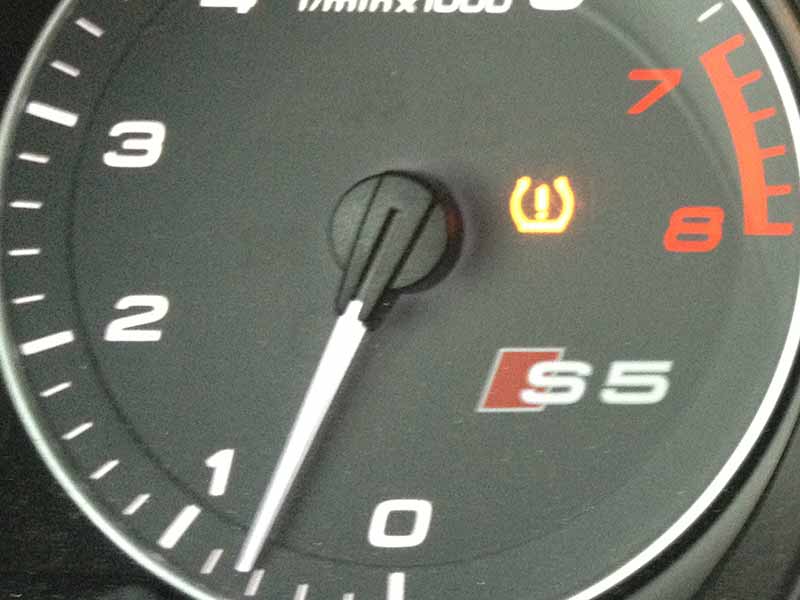
Use Tires With The Proper Load Index And Adjust Pressures
Aside from reducing the load you carry in your car or truck, there are two method of dealing with dealing with extra weight that exceeds the load carrying capacity of your vehicle:
- Increasing air pressure beyond the recommendation
- Purchasing tires with a higher load index rating
The amounts to increase will depend on the extra load and capacity of the tires. Even wear and tire safety depend on getting these adjustments correct for your situation so please work with a tire expert to determine the solution for you if this is what’s causing your uneven tire wear.
Drive More Conservatively
Aggressive driving will drastically reduce the lifespan of your tires and can easily cause both edges or sides of the tire tread to wear unusually quickly.
Uneven tire wear due to driving style can mostly be corrected by driving more conservatively. Adjustments to your suspension system to help reduce the accelerated wear will only reduce overall safety.
If you’re unable to force yourself to take those turns at lower speeds, you should be sure to rotate your tires more often. Tire rotation will help more evenly distribute the uneven wear patterns of each tire position around to each tire and help you get a little more life and more even wear out of them.
I wouldn’t expect dramatic benefits from more frequent tire rotation for aggressive driving, but it can help you get more out of your tires before the shoulders wear down past their prime.
You may also consider a less soft rubber compound tire. Softer summer or sports car tires will wear much more quickly, and they also tend to be more expensive than the less sticky touring tire options.
This will reduce performance but will likely help your budget.
Ensure Wheels And Tires Are Properly Matched
The most important aspect of matching tire size to wheel size is ensuring the widths are compatible. The following tire chart should help you determine if your tires and wheels properly fit.
| Wheel Width | Min Section Width | Ideal Section Width | Max Section Width |
|---|---|---|---|
| 5.0″ | 155mm | 165-175mm | 185mm |
| 5.5″ | 165mm | 175-185mm | 195mm |
| 6.0″ | 175mm | 185-195mm | 205mm |
| 6.5″ | 185mm | 195-205mm | 215mm |
| 7.0″ | 195mm | 205-215mm | 225mm |
| 7.5″ | 205mm | 215-225mm | 235mm |
| 8.0″ | 215mm | 225-235mm | 245mm |
| 8.5″ | 225mm | 235-245mm | 255mm |
| 9.0″ | 235mm | 245-255mm | 265mm |
| 9.5″ | 245mm | 255-265mm | 275mm |
| 10.0″ | 255mm | 265-275mm | 285mm |
| 10.5″ | 265mm | 275-285mm | 295mm |
| 11.0″ | 275mm | 285-295mm | 305mm |
| 11.5″ | 285mm | 295-305mm | 315mm |
| 12.0″ | 295mm | 305-315mm | 325mm |
| 12.5″ | 305mm | 315-325mm | 335mm |
| 13.0″ | 315mm | 325-335mm | 345mm |
| 13.5″ | 325mm | 335-345mm | 355mm |
| 14.0″ | 335mm | 345-355mm | 365mm |
Rotate Tires Every 5000 miles
Be sure to rotate your tires every 5,000 miles or at least as often as is required by your tire manufacturer’s warranty. This will help you get the most out of your tires.
If you meet all of the tire warranty requirements and your tires wear out before the guaranteed warranty mileage you can make a warranty claim and get a prorated discount on your replacement tires.
Inner Or Outer Edge Wear
It’s important to point out the difference between inner and outer edge wear and inner or outer edge wear.
While this article thoroughly covers issues to consider when both edges of your tire tread are wearing more quickly than the middle, if you’re experiencing problems with excessive wear on only the inner edge or outer edge of the tire, the causes of these uneven wear patterns are very different.
Be sure to check out our articles on inner tire wear and outer tire wear if you’re experiencing these problems.
Resources
Below are some links you may find helpful when learning about tires
Final Thoughts
Chances are that if your tires are wearing on the inner and outer shoulders you’ve simply not kept them properly inflated. While this isn’t the only potential cause of this uneven tire wear pattern, it is far and away the most common reason this type of wear pattern occurs.
If this isn’t the case for you, one of the other fixes we’ve covered here should solve the issue for you.
And don’t forget, be sure to meet the requirements for maintaining your tire warranty so you can cash in if your tires don’t live up to the mileage guarantee.
Good luck and happy motoring.
